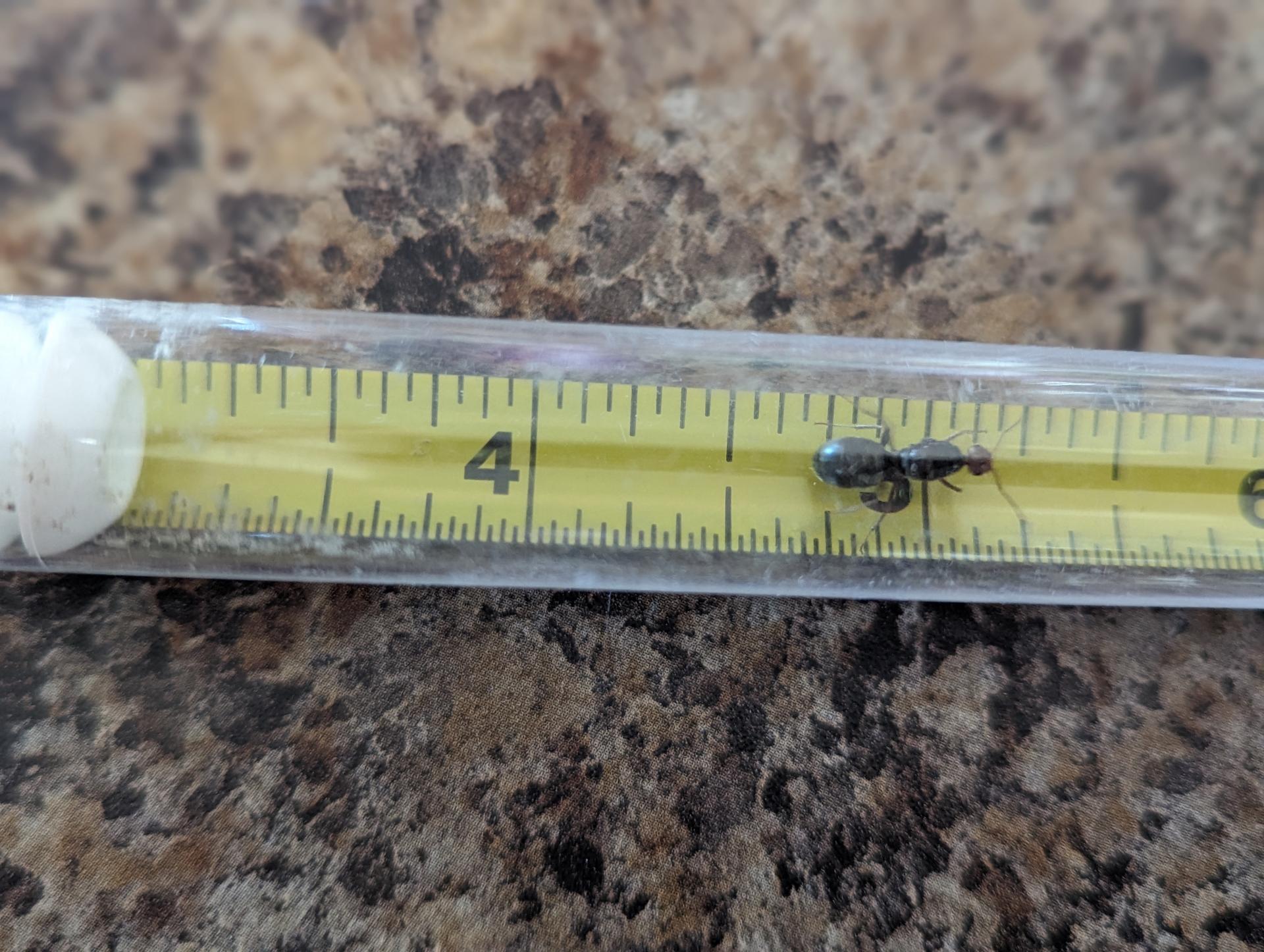
- Formiculture.com
- Forums
- Gallery
- Members
- Member Map
- Chat


could it be M.depilis
Currently keeping: 2 C.vicinus colonies.2 C.sansabeanus. 1 C.leavissimus. 2 C.Ca02. 1 V.pergandei. 4 T.immigrans.1 F.pacifica. 1 C.hyatti
1 M.ergatognya
Trying to get my hands on :C.modoc,A.vercicolor, and Any Honeypots
The M. mimicus-flaviceps-group, containing both M. mimicus and M. depilis, have queens that are typically around 12 mm. Wherever the 8-9 mm measurements are comming from needs to be avoided. M. depilis seems to be a likely species based on locale and time of year. However, better pictures would help.
I'm not very good at identifiying ants, but from what i see in pictures online, I would also say its M.depilis
I find Google to be unreliable in these topics. And as ReignofRage said they fly around this time and is around your area I will stick with M.depilis
Currently keeping: 2 C.vicinus colonies.2 C.sansabeanus. 1 C.leavissimus. 2 C.Ca02. 1 V.pergandei. 4 T.immigrans.1 F.pacifica. 1 C.hyatti
1 M.ergatognya
Trying to get my hands on :C.modoc,A.vercicolor, and Any Honeypots
It is more likely to be M. depilis, in my opinion.
Ok, sounds good. Next question, are they more likely to be M. depilis or M. mimicus, or are the two nearly the same species? I haven't found much info on depilis but I know mimicus is polygynous.
Mimicus is a little bigger then depilis but it seems to be depilis
Currently keeping: 2 C.vicinus colonies.2 C.sansabeanus. 1 C.leavissimus. 2 C.Ca02. 1 V.pergandei. 4 T.immigrans.1 F.pacifica. 1 C.hyatti
1 M.ergatognya
Trying to get my hands on :C.modoc,A.vercicolor, and Any Honeypots
Not that I know of
Currently keeping: 2 C.vicinus colonies.2 C.sansabeanus. 1 C.leavissimus. 2 C.Ca02. 1 V.pergandei. 4 T.immigrans.1 F.pacifica. 1 C.hyatti
1 M.ergatognya
Trying to get my hands on :C.modoc,A.vercicolor, and Any Honeypots
It seems these queens can also be pleometrotic meaning they will found with eachother then the workers will cull all but one queen
Edited by GOCAMPONOTUS, June 12 2024 - 6:48 AM.
Currently keeping: 2 C.vicinus colonies.2 C.sansabeanus. 1 C.leavissimus. 2 C.Ca02. 1 V.pergandei. 4 T.immigrans.1 F.pacifica. 1 C.hyatti
1 M.ergatognya
Trying to get my hands on :C.modoc,A.vercicolor, and Any Honeypots
It's does not appear terribly uncommon for colony foundation by pleometrosis for ants.
Antopia USA had some Myrmecocystus placodops 01 with multiple queens for sale. M. mimicus is known to. M mendax has a truly polygynous genotype.
You never know when after some time polygynous colonies may develop or are already developed in certain species.
Edited by Mushu, June 12 2024 - 9:25 PM.
0 members, 1 guests, 0 anonymous users